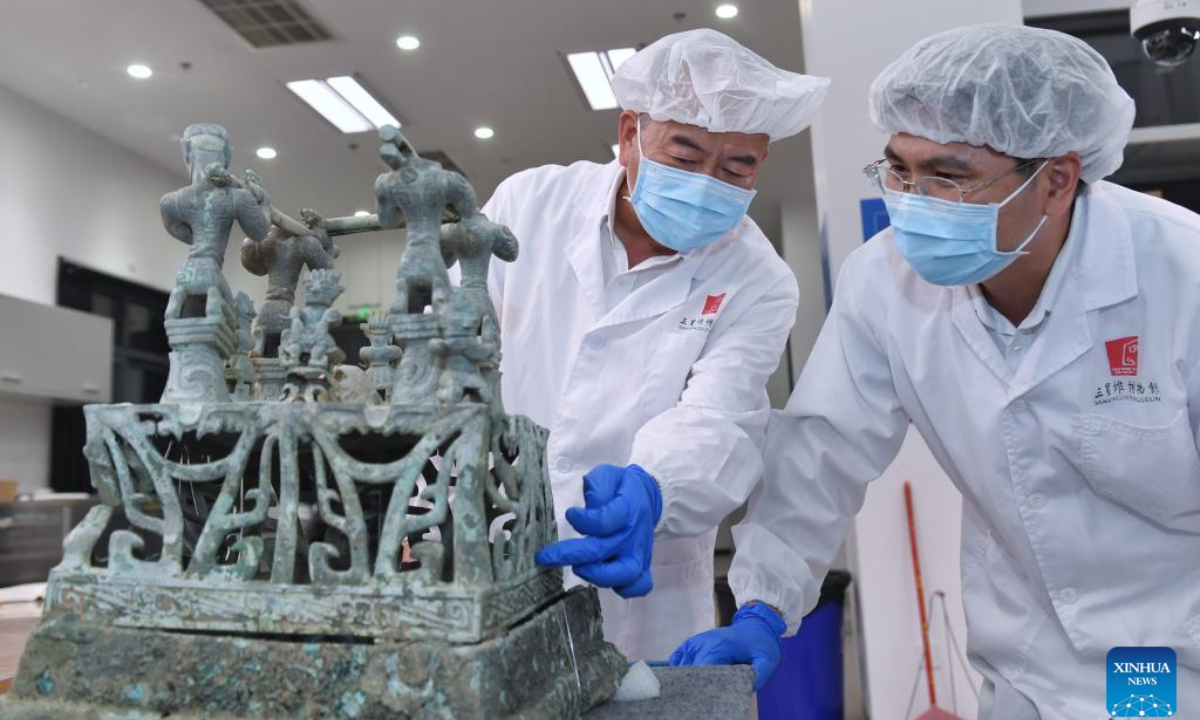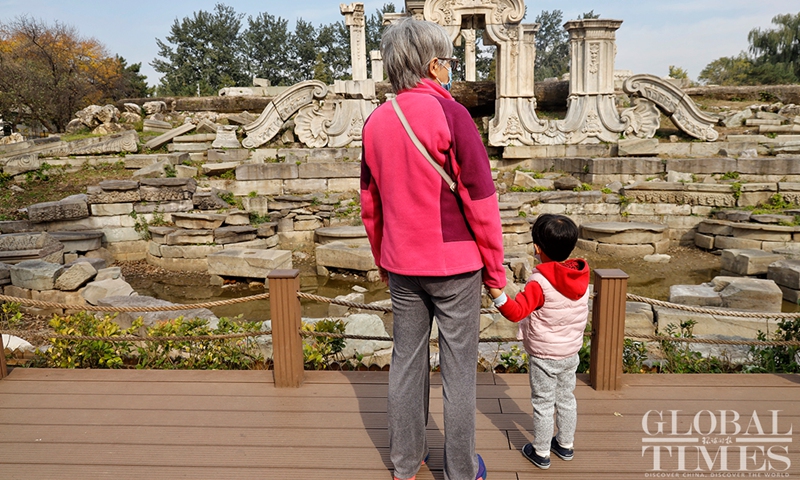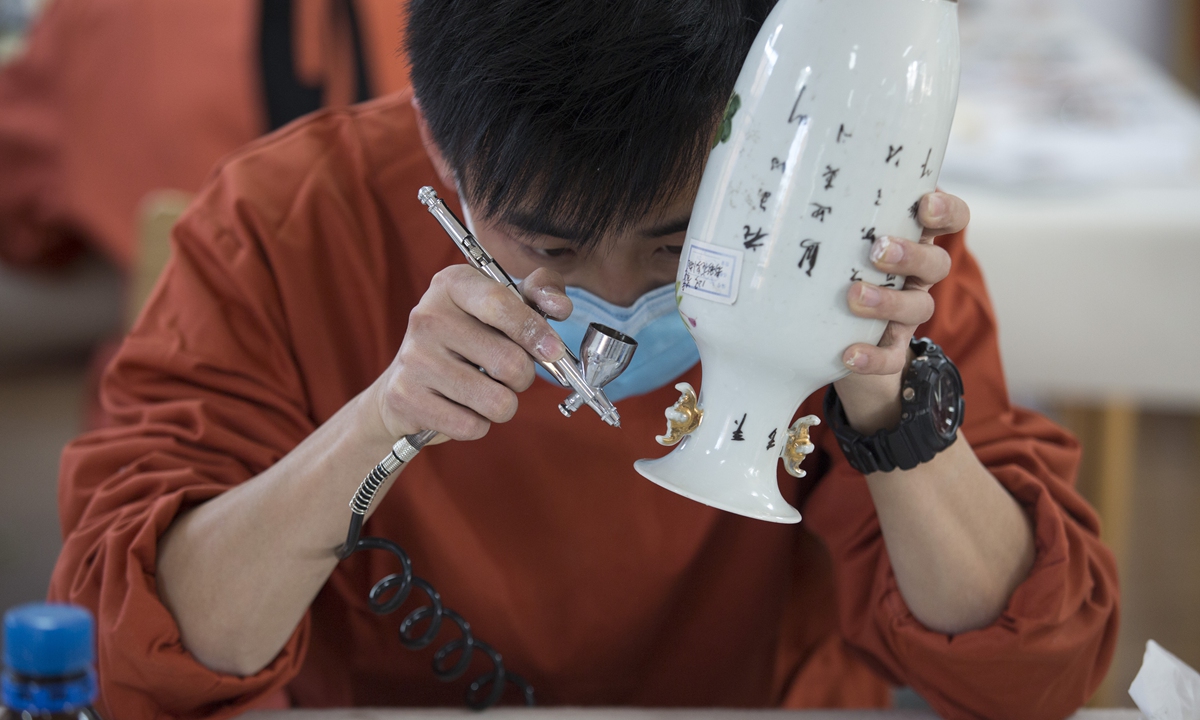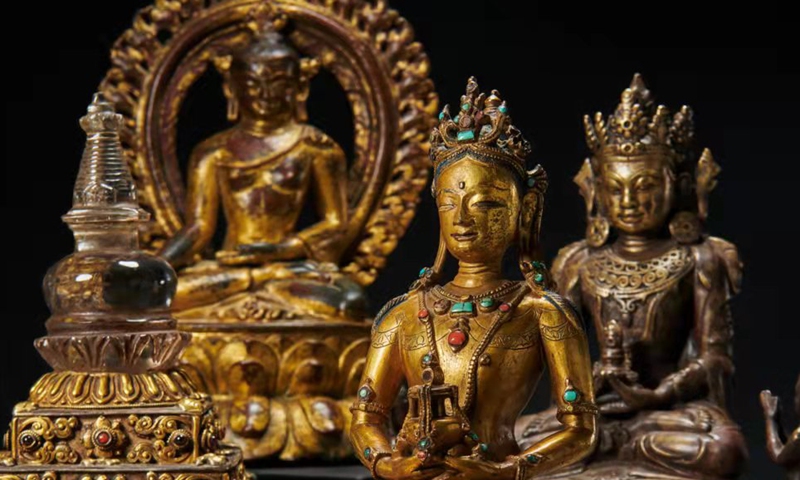
Guo Hanzhong (L) discusses the restoration plan of a bronze altar with his colleague at Sanxingdui Museum in Guanghan City, southwest China's Sichuan Province, May 30, 2023. Guo Hanzhong is the vice head of the cultural relics storage department of the Sanxingdui Museum in southwest China's Sichuan Province. The 56-year-old man is skilled in the craft of restoring cultural relics. In the past 40 years, he has restored more than 6,000 cultural relic items and was deeply involved in the excavation of all the eight "sacrificial pits" found at Sanxingdui Ruins site. After the completion of the field work in the Sanxingdui Ruins site, sorting, protection and restoration of newly unearthed cultural relics have become the most important work in the current research. "There are probably tens of thousands of relics waiting to be restored, and I can't finish the job in my generation. It needs to be done from generation to generation," Guo Hanzhong said, "Repairing cultural relics needs experience. And I will try my best to pass on what I have learned to younger generations, and cultivate more talents." Photo:Xinhua
With the purpose of conducting a national survey on heritage belonging to China's military and national defense sector, a notice was jointly released recently by China's National Cultural Heritage Administration (NCHA) and the State Administration of Science, Technology and Industry for National Defense.
Different from traditional heritage surveys targeting sectors like archaeology, the current agenda focuses on "sites, artifacts and historical documents representing China's military and industrial histories," cultural policy expert Dou Saiming told the Global Times.
"Taking China's Third-Front Movement as an example, the historical event left behind precious legacies like the '816 project' site in Chongqing and also the '3536 factory' site in Sichuan Province," said Dou. Carried out during the 1960s and 1970s, the Third-Front Movement was China's most noticeable defensive industrialization event in history.
In the notice, approaches regarding how cultural and national defense organs should work together have been specified.
The notice requires different regions and provinces' military and defense-related management departments to "take the initiative" to connect with cultural heritage organs. Besides the two professional bodies, the notice also encourages "all sectors of society" to provide sources of potential military heritage.
Zhang Yiwu, a professor at Peking University, told the Global Times that departments in military and defense-related industries often "have thorough and detailed databases of the heritage in their fields" and that these resources are the "basis for investigations."
"With such references provided to cultural heritage groups, the two bodies will work together on site-investigations and also assessing their value," Zhang said.
The notice has highlighted that, after passing assessments, sites that meet the standards of "cultural relics" will be "listed and registered as immovable cultural relics."
While providing collaboration guidance, the notice indicates that a "three importance and one great" strategy will be adopted for the conservation and utilization of immovable cultural relics.
This strategy involves looking into a site's spirit, major collections as well as representative pioneers. The one "great" refers to making modern interpretations of a site's greatest event and making protection-oriented plans to utilize a site's heritage.
Dou told the Global Times that a creative way to utilize the heritage in the military and national defense sectors would be to strategically turn them into cultural tourism resources.
"A military legacy inspired tourist site should be able to have mixed facilities like an exhibiting hall and commercial organs like cafés and restaurants," Dou noted while emphasizing that heritage conservation should be prioritized above commercial activities.
In November 2023, China launched its fourth national survey of cultural relics. Establishing a catalog and database for immovable cultural relic resources is a major goal for the program.
Running from 2023 to 2026, the national survey is divided into three phases. The second phase, which has many ongoing projects, aims to conduct "on-site investigations."



